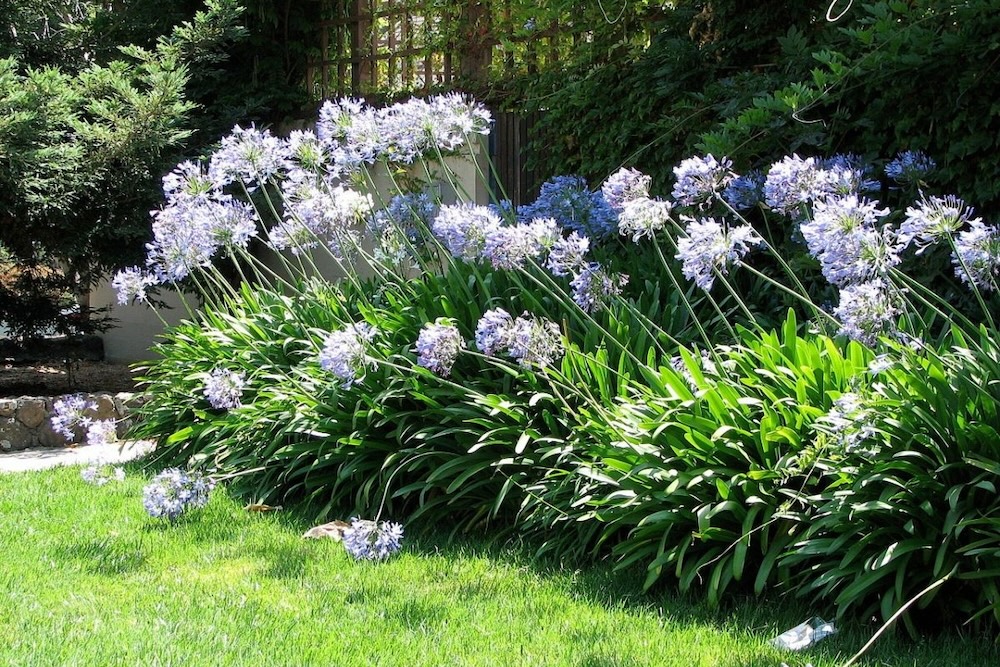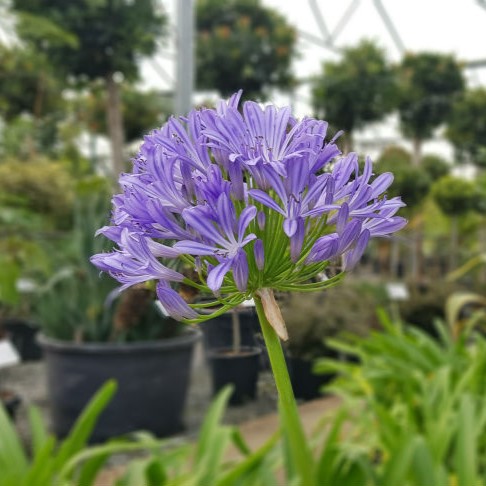Agapanthus Companion Plants: Perfect Pairings for Your Yard
Agapanthus Companion Plants: Perfect Pairings for Your Yard
Blog Article
Understanding the Art of Agapanthus Treatment: Crucial Actions for Healthy Growth and Vivid Blooms
In the world of horticulture, the growing of agapanthus stands as a rewarding endeavor for those who seek to support these classy blooming plants. From selecting the right range to grasping trimming techniques, the journey in the direction of growing thriving agapanthus plants is complex and holds the crucial to unlocking the full potential of these herb gems.

Picking the Right Agapanthus Selection

When picking the ideal Agapanthus selection for your garden, take into consideration elements such as environment viability, bloom shade, and development practice. Agapanthus, commonly known as Lily of the Nile or African lily, can be found in a selection of colors varying from tones of purple and blue to white. Choose a bloom color that enhances your existing yard scheme to create a harmonious landscape. Furthermore, take into consideration the environment in your area to guarantee the Agapanthus variety you pick can prosper in your specific conditions. Some varieties are more forgiving of cold temperature levels, while others choose warmer environments. Recognizing the growth routine of different Agapanthus ranges is critical for proper positioning within your yard. Some varieties have a clumping development routine, perfect for containers or borders, while others have an even more spreading nature, ideal for ground cover or mass growings. By very carefully assessing these elements, you can choose the best Agapanthus range to enhance the beauty of your yard.
Ideal Growing Problems
Considering the optimum ecological requirements is important for effective Agapanthus farming. Agapanthus plants are delicate to cool temperature levels and should be protected from frost throughout wintertime months.
To make sure healthy development and dynamic flowers, plant Agapanthus bulbs at a depth of regarding 2-4 inches and room them 8-12 inches apart. Mulching around the base of the plants assists retain moisture and suppresses weed development.
Watering and Feeding Tips
Keeping correct wetness levels and giving necessary nutrients are vital aspects in the care program for Agapanthus plants. When it comes to watering Agapanthus, it is crucial to strike an equilibrium. These plants favor constantly damp dirt but are susceptible to root rot if overwatered.
Feeding Agapanthus is important for advertising healthy development and respected flowers. Apply a well balanced plant food, such as a 10-10-10 formula, in the early spring as new growth emerges. Repeat this application every 6-8 weeks throughout the expanding season. Prevent extreme fertilizing, as it can bring about lavish foliage at the expense of blooms. Constantly adhere to the producer's guidelines for appropriate dilution and application techniques. By following these watering and fertilizing tips, you can guarantee your Agapanthus plants flourish and create lively, durable blooms.
Pruning Techniques for Agapanthus
Trimming Agapanthus plants at the appropriate times and with appropriate strategies is vital for maintaining their health and wellness and advertising ideal growth click this and flowering. The optimal time to trim Agapanthus is in late winter or very early spring prior to brand-new growth arises.
Deadheading invested blossoms can also redirect the plant's power into producing more blooms instead than setting seeds. If you want to collect seeds for proliferation, leave some flowers to dry and fully grown on the plant.
Keep in mind to utilize clean, sharp devices to make precise cuts and minimize the threat of introducing diseases. Agapanthus. Regular trimming will assist maintain your Agapanthus looking cool and healthy and balanced while ensuring a plentiful display of lovely blooms
Taking Care Of Usual Bugs and Illness
After guaranteeing appropriate pruning techniques for Agapanthus, it is important to deal with common bugs and diseases that can affect the health and vigor of these plants. One usual parasite that impacts Agapanthus is the Agapanthus gall midget.
One more usual issue is fungal fallen leave area, which presents as dark lesions on the leaves. To stop fungal illness, ensure good air flow around the plants, avoid overhead watering, and get rid of any type of contaminated fallen leaves quickly. In addition, Agapanthus plants can experience origin rot if they are planted in poorly draining pipes dirt. To avoid this, plant Agapanthus in well-draining dirt and prevent overwatering. By being watchful and taking punctual action against illness and parasites, you can help your Agapanthus plants prosper and create lively flowers.

Conclusion
To conclude, mastering the art of agapanthus treatment entails selecting the best selection, giving suitable growing conditions, correct watering and fertilizing, suitable click here to read trimming methods, and attending to common pests and illness. By complying with Continue these important actions, you can ensure healthy development and lively blossoms for your agapanthus plants. Bear in mind to regularly check and maintain your plants to advertise their overall well-being and longevity.
To guarantee healthy and balanced development and lively flowers, plant Agapanthus bulbs at a depth of about 2-4 inches and room them 8-12 inches apart. By following these watering and fertilizing pointers, you can ensure your Agapanthus plants prosper and generate dynamic, durable blooms.
One typical insect that affects Agapanthus is the Agapanthus gall midge. Furthermore, Agapanthus plants can experience from root rot if they are planted in inadequately draining dirt. By following these necessary actions, you can guarantee healthy development and vibrant blooms for your agapanthus plants.
Report this page